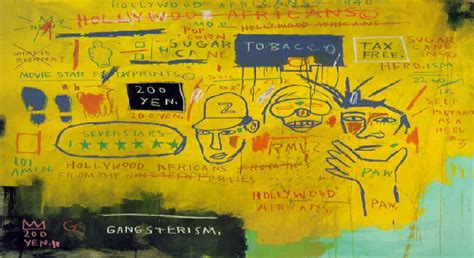Jean-Michel Basquiat, an icon of contemporary art, revolutionized the art world with his unique style and poignant commentary. Emerging from the vibrant streets of New York in the late 1970s, Basquiat’s work melded raw expression with profound socio-political themes, capturing the essence of urban experience and identity. His art, characterized by its dynamic use of color, text, and imagery, not only challenged conventional artistic norms but also resonated deeply with diverse audiences. As we explore Basquiat’s influence, we’ll delve into his early life, artistic evolution, and the ways in which his work intersects with and inspires technological advancements in art. Join us in uncovering the enduring legacy of this remarkable artist.
Let’s investigate this topic extensively with inxos.xyz
1. Introduction to Basquiat
Jean-Michel Basquiat, a pivotal figure in contemporary art, remains a symbol of artistic rebellion and innovation. Born in Brooklyn in 1960, Basquiat’s rise from graffiti artist to renowned painter was marked by a raw, unfiltered approach that captivated the art world. His work, which first gained attention through his street art under the moniker SAMO, soon evolved into a distinct style characterized by its bold colors, fragmented imagery, and incisive text. Basquiat’s art reflects his experiences and observations of urban life, blending elements of his Afro-Puerto Rican heritage with a critique of social and political issues.
Despite his brief career—Basquiat tragically passed away at the age of 27—his impact has been profound and enduring. His work not only challenged traditional art forms but also opened new dialogues about race, identity, and societal structures. Basquiat’s ability to convey complex themes through a combination of symbolic imagery and expressive brushwork has cemented his place as a key figure in modern art. This article will explore the various facets of Basquiat’s life and work, highlighting his contributions to art and examining how his influence extends into contemporary technological realms.

2. Early Life and Background
Jean-Michel Basquiat was born on December 22, 1960, in Brooklyn, New York, to a Haitian father and a Puerto Rican mother. Growing up in a culturally rich but challenging environment, Basquiat was exposed to a diverse array of influences from an early age. His parents, particularly his mother, nurtured his artistic inclinations, which became evident through his early sketches and creative expressions.
As a child, Basquiat was diagnosed with a learning disability, which he later channeled into his art. He attended the prestigious Brooklyn Museum Art School, where he developed his unique style. By his teenage years, Basquiat had already started to make a name for himself in the underground art scene, initially through graffiti. His work under the pseudonym SAMO attracted attention for its provocative and thought-provoking content. This early exposure to the art world set the stage for his later success, as Basquiat transitioned from street art to the fine art world, capturing the attention of critics and collectors alike.

3. Artistic Style and Influences
Jean-Michel Basquiat’s artistic style is characterized by a raw, vibrant energy that combines elements of graffiti, primitive art, and abstract expressionism. His work often features bold, vivid colors, fragmented forms, and a dynamic use of text and imagery. Basquiat’s paintings are marked by their spontaneous, almost chaotic quality, which reflects his unfiltered emotional expression and social commentary.
Influenced by his urban environment, African, Caribbean, and African-American culture, Basquiat drew inspiration from a wide range of sources, including jazz music, comic books, and political activism. His art often incorporates symbolism and iconography related to race, identity, and social issues. The use of fragmented text and recurring motifs like crowns, skulls, and masks highlights his commentary on power, inequality, and personal struggle. This eclectic mix of influences and styles contributed to Basquiat’s unique visual language, making his work both provocative and deeply resonant.

4. Key Works and Themes
Jean-Michel Basquiat’s oeuvre is marked by several key works that exemplify his distinctive style and thematic concerns. One of his most renowned pieces, “Untitled (1981),” features a chaotic composition of vibrant colors, abstract forms, and fragmented text, showcasing his raw and energetic approach to art. Another significant work, “Irony of Negro Policeman (1981),” critiques racial and social issues through powerful symbolism and stark imagery.
Basquiat’s art frequently explores themes of identity, power, and social injustice. His recurring motifs, such as crowns, skulls, and masks, serve as symbols of authority, mortality, and cultural heritage. The crown motif, for instance, often represents both a personal and societal struggle for recognition and respect. His work also delves into the complexities of race and class, reflecting his own experiences and broader societal issues.
These themes are evident in pieces like “Hollywood Africans (1983),” which critiques stereotypes and representations of Black identity in popular culture. Basquiat’s ability to blend personal narrative with socio-political commentary makes his work not only visually striking but also intellectually engaging, establishing him as a powerful voice in contemporary art.
5. Impact on Contemporary Art
Jean-Michel Basquiat’s impact on contemporary art is profound and multifaceted. His integration of graffiti aesthetics with fine art broke conventional boundaries, ushering in a new era of artistic expression. Basquiat’s raw, energetic style, characterized by vibrant colors, fragmented imagery, and bold text, has influenced a generation of artists who seek to blend street art with traditional mediums. His work’s focus on social commentary and identity has also reshaped how contemporary art addresses and reflects societal issues.
Basquiat’s influence extends beyond visual art into areas like fashion, music, and popular culture, where his unique aesthetic and thematic concerns resonate strongly. His legacy has inspired numerous exhibitions, retrospectives, and scholarly studies, cementing his status as a key figure in modern art history. Contemporary artists often draw on his use of symbolism and personal narrative, incorporating similar techniques to explore themes of race, power, and identity. Basquiat’s work remains a powerful testament to the fusion of personal expression with broader socio-political commentary, continuing to inspire and challenge artists and audiences alike.
6. Technological Influence in Art
Jean-Michel Basquiat’s influence extends into the realm of technology, where his innovative spirit resonates with modern art practices. Although Basquiat’s career predated the digital age, his work has inspired the integration of technology in art through various means. Digital platforms and tools now enable artists to explore and replicate the fragmented, dynamic qualities characteristic of Basquiat’s style.
Contemporary artists use digital media to create works that echo Basquiat’s raw aesthetic and thematic depth, employing software to manipulate color, form, and text in ways that reflect his influence. Virtual galleries and online exhibitions have also facilitated wider access to Basquiat’s work, allowing global audiences to engage with his art through immersive digital experiences. Additionally, advancements in artificial intelligence and digital art tools continue to push the boundaries of how Basquiat’s techniques and themes are interpreted and reimagined in the context of modern technology, perpetuating his legacy in the digital age.
7. Reception and Criticism
Jean-Michel Basquiat’s work has elicited a diverse range of responses from critics and audiences alike. Initially, his art faced skepticism from some traditional critics who questioned its departure from established artistic norms. However, his unique blend of street art and fine art soon garnered significant acclaim for its originality and emotional intensity.
Basquiat’s paintings were praised for their raw, unfiltered expression and powerful social commentary. Critics admired his ability to address complex themes such as race, identity, and social injustice with a distinctive visual language. His use of text and symbolism, combined with vibrant, chaotic compositions, was seen as a groundbreaking approach that challenged conventional aesthetics and narrative forms.
Despite this acclaim, Basquiat’s work was not without controversy. Some detractors viewed his art as too fragmented or chaotic, questioning its coherence and depth. Additionally, discussions around the commercialization of his work after his death raised concerns about the commodification of his artistic vision.
Overall, Basquiat’s reception has evolved from early skepticism to widespread recognition as a seminal figure in contemporary art. His influence on both art and culture continues to be celebrated, with ongoing debates about the interpretation and legacy of his work.
8. Legacy and Influence Today
Jean-Michel Basquiat’s legacy continues to resonate profoundly in the art world and beyond. His innovative approach to art, characterized by its raw energy, vibrant colors, and socio-political commentary, has left an indelible mark on contemporary artistic practices. Basquiat’s influence is evident in the work of numerous artists who draw inspiration from his unique style and thematic concerns. His integration of graffiti with fine art has paved the way for a new generation of artists who explore similar intersections between street culture and high art.
Basquiat’s impact extends to popular culture, where his aesthetic and themes are frequently referenced in fashion, music, and media. His art’s ability to address complex issues of race, identity, and social justice continues to inspire discussions and reflections in various fields. Moreover, digital platforms and exhibitions have ensured that his work remains accessible and relevant, reaching global audiences and fostering ongoing engagement with his art. As new technologies and artistic movements emerge, Basquiat’s legacy endures, demonstrating the timelessness and adaptability of his creative vision.
9. Conclusion: Basquiat’s Enduring Significance
Jean-Michel Basquiat’s enduring significance in the art world underscores his remarkable impact and continued relevance. His fusion of street art and fine art created a distinctive visual language that challenged traditional boundaries and introduced new ways of engaging with art. Basquiat’s work, with its bold colors, fragmented forms, and poignant social commentary, remains a powerful testament to his artistic vision and innovation.
Despite facing early criticism, Basquiat’s unique style and thematic depth have garnered widespread recognition and admiration. His exploration of themes such as identity, race, and power has not only resonated with contemporary audiences but also influenced a generation of artists who build upon his groundbreaking approach. His art continues to inspire discussions on social and political issues, demonstrating its ongoing relevance.
In the digital age, Basquiat’s legacy is further amplified through virtual galleries, online exhibitions, and the integration of technology in art. His influence spans beyond visual art, impacting fashion, music, and popular culture. As new generations discover and reinterpret his work, Basquiat’s creative spirit endures, affirming his place as a pivotal figure in the evolution of modern art.
inxos.xyz
